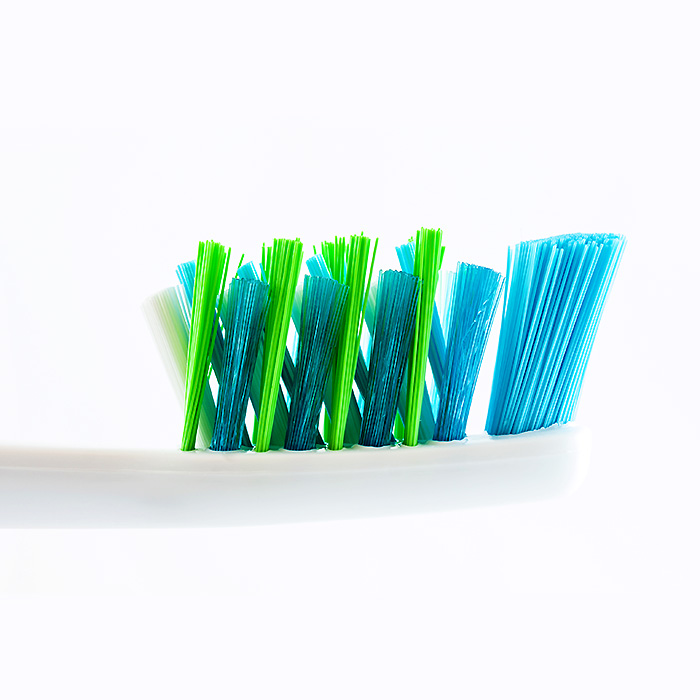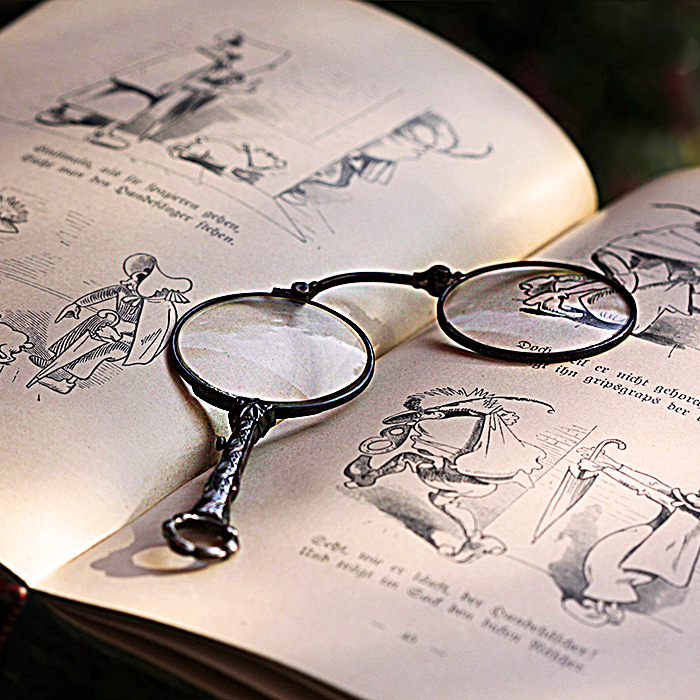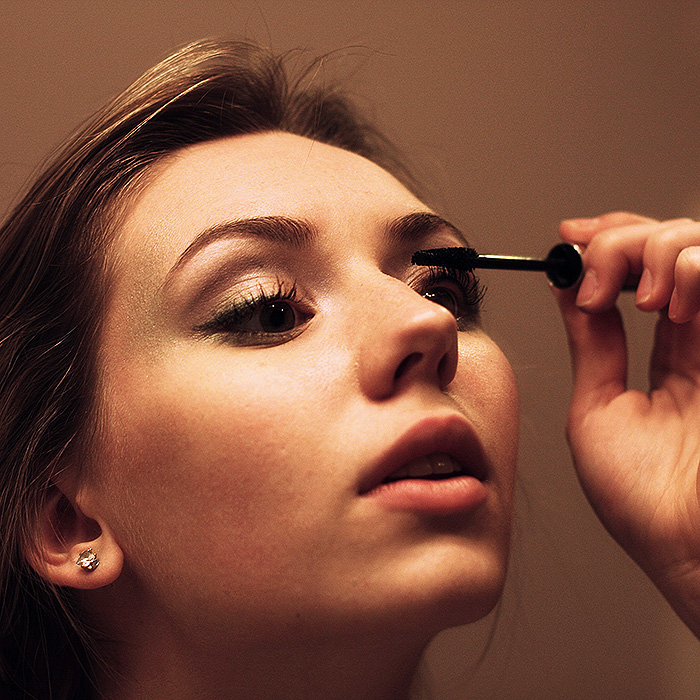optometrist
Brush Up On Some Toothbrush History

WITH ALL THE AMAZING technology we see today, it’s easy to overlook the small wonders of the world—like the toothbrush! This small, but remarkable invention is the staple of our oral hygiene and health. Join us on a journey through time as we explore the way the toothbrush has changed across the ages!
Ancient Civilizations Used Sticks to Clean Their Teeth
Today, we understand the importance oral hygiene plays in our overall health. But even over 5,000 years ago people recognized the need for some type of oral care. Babylonian and Egyptian civilizations around 3500-3000 B.C. made “toothbrushes” by fraying the end of sticks and chewing on them!
Later, the Chinese made similar chewing sticks from aromatic tree twigs that were meant to freshen breath. People didn’t just use sticks, however. Bird feathers, animal bones and even porcupine quills were used to pick at food debris in the teeth.
The First Toothbrushes Were Made with Pig Hair
The first mention of an actual brush to clean teeth appears in Chinese writings around the 13th century. Bamboo or animal bone was used as the handle of the toothbrush and pig hair formed the bristles. Toothbrushes weren’t widely used or produced, however, until a couple hundred years later.
Around the year 1780, an Englishman named William Addis was sitting in his prison cell thinking of better ways to clean our teeth than rubbing them with a rag full of soot and salt (yuck!). He carved a handle out of animal bone, made some holes at the top and tied swine bristles to it. When he got out of prison, he turned toothbrush production into a business and made a fortune!
The Modern Toothbrush Continues to Evolve Today
As appetizing as pig hair sounds, aren’t you glad toothbrushes nowadays are made with nylon bristles? Nylon was invented in 1938 and by the 1950s, toothbrushes began to look and feel more like they do today. More technological advances made it possible to develop toothbrushes even further, and the electric toothbrush made its way to the United States in 1960.
People are still looking to drive toothbrush technology forward. New apps are being created all the time to make toothbrushing easier and more enjoyable. It even looks like built-in cameras may be in the future of toothbrushes!
https://www.youtube.com/watch?v=deOqWyRp-XI?rel=0
The Toothbrush: One of Man’s Greatest Inventions?
The idea of the toothbrush was simple, but there’s no doubt it has greatly contributed to our oral and overall health. In fact, when a group of people were asked which invention they could not live without, the toothbrush beat out the car, computer, cell phone and microwave!
So, don’t take your toothbrush for granted. Use it twice daily for a full two minutes!Your pearly whites will thank you.
Top image by Flickr user William Warby used under Creative Commons Attribution-Sharealike 4.0 license. Image cropped and modified from original.
The content on this blog is not intended to be a substitute for professional medical advice, diagnosis, or treatment. Always seek the advice of qualified health providers with questions you may have regarding medical conditions.
Eyeglasses and Their Journey Through Time

In today’s world, if you feel your vision growing weaker you simply go to the eye doctor and get a prescription for glasses or contact lenses. It wasn’t always so easy!
Glasses have come a long way since their inception some time in the 13th century.Join us on a journey through time as we explore the way eyeglasses have changed through the ages!
Eyewear Began As A Magnifying Glass
Between A.D. 1000 and 1250, monks developed and used reading stones–much like a magnifying glass–that laid against reading material to magnify letters. The first wearable glasses were invented some time between 1260 and 1290, however the inventor is unknown.
The use of spectacles spread throughout Europe over time. There were various styles available, one of the most popular being the scissor-glasses, used by historical figures such as George Washington and Napoleon Bonaparte.
In the 1780s, Benjamin Franklin developed the bifocal lens, targeting two different areas of vision correction.
In The 19th Century, Eyewear Became A Fashion Statement
The most iconic piece of eyewear popularized in the 1800s was the monocle(think Mr. Peanut), meant for vision correction in one eye only. Monocle wearers were usually men in society’s upper classes. Women, on the other hand, had their own fashion statements to worry about.
The 19th century saw the advent of what was called the lorgnette, two lenses in a frame held with a handle on one side. The lorgnette was popular with the ladies, many of whom would not wear spectacles, and was thus more of a fashion accessory than a visual aid.
Pince-nez, French for “pinch nose,” glasses were developed and popularized in the late 1800s and early 1900s. These glasses were not supported by earpieces and stayed on by gently pinching the nose. Pince-nez glasses were sported by U.S. President Teddy Roosevelt.
Hollywood Stars Heavily Influenced 20th Century Style
Glasses of the past, such as pince-nez, were seen as stuffy and out of date by the early 1900s. Hollywood stars began to popularize round, tortoiseshell spectacles that better resemble the glasses we see today. Temple spectacles became all the rage.
By the 1940s glasses were available in many sizes, shapes and colors due to advances in the manufacture of plastics. As glasses became more customizable over time, they began to reflect the personality and tastes of the wearer.
https://www.youtube.com/watch?v=wwM9mnw4v4s?rel=0
Come Explore Our Eyewear Collection
Eyeglasses have been regarded by many as one of the most beneficial inventions in human history. Through the innovation and exploration of past thinkers, glasses have become an essential visual aid for many people.
And when it comes to eyewear style, nowadays your options are limitless. At our practice, whatever your taste and personality, we have the frames for you.We only carry eyewear of the highest quality. Come explore our collection today!
Our patients make our job worthwhile!
The content on this blog is not intended to be a substitute for professional medical advice, diagnosis, or treatment. Always seek the advice of qualified health providers with questions you may have regarding medical conditions.
Makeup Tips To Protect Your Eyes

Eyeliner, mascara, eyeshadow… Makeup can really make eyes pop!
Despite the striking effect of beauty products, it’s important to remember that putting anything that close to your eye can potentially be harmful. We’ve compiled some cosmetic safety tips so you can look beautiful AND protect your eyes.
Watch Out For Allergic Reactions
For those who are prone to allergic reactions to certain cosmetics, it’s important to introduce one new eye makeup product at a time to your routine. If you don’t have a reaction, go ahead and add another.
Be sure to to remember makeup ingredients you’re allergic to and always check labels when picking out a new product. Allergic reactions can cause redness, irritation, swelling or infection in your eyes. So, do your best to avoid them!
Avoid Scratching Your Eye
One of the most serious eye issues that makeup application can cause is a corneal abrasion. This often happens when using a safety pin or other sharp object to separate the eyelashes. It also occurs when attempting to apply makeup in moving vehicles. We all know accidents happen, so it’s best to be as cautious as possible.
Prevent Eye Infection
Unfortunately, infection is a common problem associated with eye makeup. But not to worry, here are some ways you can avoid infection and still rock that smokey eye!
- Wash your hands. You never want to introduce all that bacteria on your hands to your eyes. Always wash your hands before applying makeup.
- Don’t use expired makeup. Bacteria thrive in dark, moist places, just like your mascara tube and makeup sponges. The more you use your makeup, the more bacteria you introduce. Be sure to replace makeup every three months.
- Don’t share. When you use somebody else’s makeup, you’re introducing different bacteria to your eyes that may be harmless to your friend, but damaging to you. When it comes to makeup, sharing is not caring!
- Get new makeup after an infection. Makeup can be contaminated with the bacteria causing your eye infection. To avoid any risk of reinfection, throw out your old stuff and use it as an excuse to get some new makeup!
Here are a few more helpful tips to keep in mind when you go through your old makeup:
If You Wear Contacts, Take Extra Precautions
Eye makeup is one of the most common problems for contact lens wearers. Always remember to insert your contact lenses prior to applying makeup and try to opt for makeup that doesn’t flake, like cream eye shadows. Avoid fiber mascaras as well as there is a higher risk of makeup particles entering the eye.
Many makeup wearers who use contacts switch to daily lenses so they can be sure they’re using fresh, makeup- and residue-free contacts.
Stay Safe And Beautiful
If you’re concerned about makeup and eye safety or have any questions, come talk to us. We’re here to help you know how to protect your eyes as well as beautify them!
The content on this blog is not intended to be a substitute for professional medical advice, diagnosis, or treatment. Always seek the advice of qualified health providers with questions you may have regarding medical conditions.
Image by Flickr user eflon used under Creative Commons Attribution-ShareAlike 4.0 license. Image cropped and modified from original.
Are You Blinking Enough?

We don’t often pay attention to our blinking habits throughout the day. But whether we realize it or not, blinking is vitally important to our eye health.
The average adult blinks between 10 and 20 times per minute. Even though a blink only takes one tenth of a second, all those blinks add up to about 10 percent of our waking life! So, what’s so important about blinking that we need to miss out on 10 percent of everything that’s happening right in front of us?
Blinking Nourishes And Lubricates Our Eyes
Blinking is necessary to clean and moisturize our eyes. Each time we blink, a thin layer of tears is spread across the eye surface, keeping them from drying out as well as brushing away any small particles of dust or dirt that could otherwise irritate our eyes or impair our vision.
https://www.youtube.com/watch?v=MzjOPtInf1c?rel=0
When We Focus, We Blink A Lot Less
Did you know that the number of times we blink decreases drastically when we are focused on something? On average we only blink three to eight times per minute when reading, watching TV, listening to a podcast, working on a computer, or another activity that requires intense focus. That’s roughly 60 percent less than our normal rate of blinking! This lack of blinking over time can lead to eyestrain and dry eyes.
Blinking Exercises Can Relieve Strain And Help Dry Eyes
For the most part, we may not realize when we’re blinking. However, making a conscious effort to blink more often during high focus activities can do our eyes a world of good.
Make it a habit to close your eyes when you are thinking or doing something that doesn’t require your vision. Set reminders for yourself to do a blinking exerciseevery hour during periods of focus. One good exercise that will leave your eyes feeling fresher is to simply close your eyes and pause, squeeze them for a moment, open them and relax.
A Lot Happens In The Blink Of An Eye
The mechanism of our eyes is incredible! Different types of tears along with multiple oil-producing sebaceous glands work together all day to nourish and protect our eyes.Truly, a lot happens in the blink of an eye!
Ask yourself, are you blinking enough throughout the day? Even though blinking seems minor to us, it essential to keeping our eyes healthy.
We are grateful to our loyal patients!
Image by Flickr user gautsch. used under Creative Commons Attribution-ShareAlike 4.0 license. Image cropped and modified from original.


